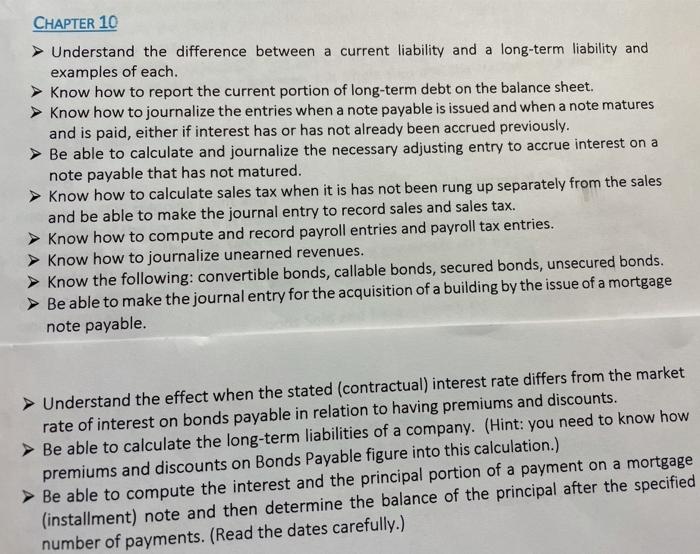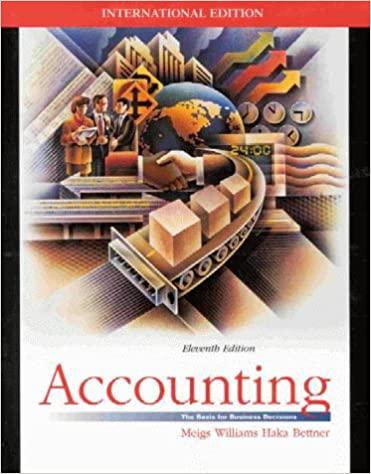CHAPTER 10 Understand the difference between a current liability and a long-term liability and examples of each. know how to report the current portion of long-term debt on the balance sheet. Know how to journalize the entries when a note payable is issued and when a note matures and is paid, either if interest has or has not already been accrued previously. Be able to calculate and journalize the necessary adjusting entry to accrue interest on a note payable that has not matured. > know how to calculate sales tax when it is has not been rung up separately from the sales and be able to make the journal entry to record sales and sales tax. Know how to compute and record payroll entries and payroll tax entries. Know how to journalize unearned revenues. Know the following: convertible bonds, callable bonds, secured bonds, unsecured bonds. Be able to make the journal entry for the acquisition of a building by the issue of a mortgage note payable. Understand the effect when the stated (contractual) interest rate differs from the market rate of interest on bonds payable in relation to having premiums and discounts. Be able to calculate the long-term liabilities of a company. (Hint: you need to know how premiums and discounts on Bonds Payable figure into this calculation.) > Be able to compute the interest and the principal portion of a payment on a mortgage (installment) note and then determine the balance of the principal after the specified number of payments. (Read the dates carefully.) CHAPTER 10 Understand the difference between a current liability and a long-term liability and examples of each. know how to report the current portion of long-term debt on the balance sheet. Know how to journalize the entries when a note payable is issued and when a note matures and is paid, either if interest has or has not already been accrued previously. Be able to calculate and journalize the necessary adjusting entry to accrue interest on a note payable that has not matured. > know how to calculate sales tax when it is has not been rung up separately from the sales and be able to make the journal entry to record sales and sales tax. Know how to compute and record payroll entries and payroll tax entries. Know how to journalize unearned revenues. Know the following: convertible bonds, callable bonds, secured bonds, unsecured bonds. Be able to make the journal entry for the acquisition of a building by the issue of a mortgage note payable. Understand the effect when the stated (contractual) interest rate differs from the market rate of interest on bonds payable in relation to having premiums and discounts. Be able to calculate the long-term liabilities of a company. (Hint: you need to know how premiums and discounts on Bonds Payable figure into this calculation.) > Be able to compute the interest and the principal portion of a payment on a mortgage (installment) note and then determine the balance of the principal after the specified number of payments. (Read the dates carefully.)







